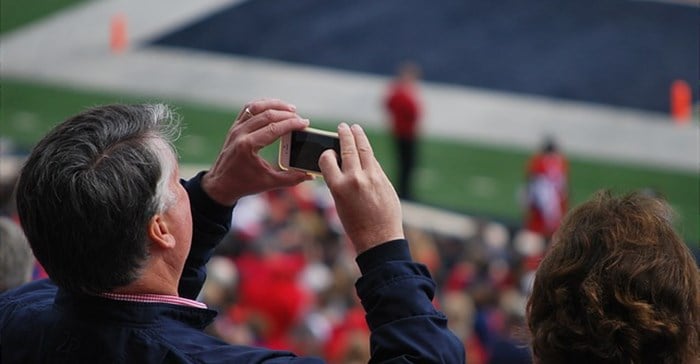Big Data, big crowds: how technology can move fans from the couch to the stadium

However, stadiums and sports teams aren't going to concede the couch without a fight. Their weapons of choice? Big data, wearable technology, and stadium-centric apps.
Wearables are for the fans to
Wearable technology may strictly be thought of as an athlete benefit, used to time reactions and measure heart rate, and even monitor signs of concussion. However, athletes wearing movement monitors can benefit the fans as well, and even the front offices. For example, SportVU is a series of GPS technology-enabled cameras that track the movements of NBA players and the ball, offering coaches access to data about speed, distance, player separation, and ball possession. The Cleveland Cavaliers use that data for more than just deciding when to sub a player; they use the statistics to populate their Humungotron with real-time statistics, which also get shared to social media and used in various advertiser partnerships.
The Sacramento Kings, meanwhile, give wearable technology to people besides the players. In 2014, the Kings partnered with Google to allow mascots, reporters, and dancers to wear Google Glasses during home games. Fans could then use their mobile devices to stream courtside views of the action, despite being in upper-level seats.
An improved stadium experience
The stadium experience is also changing drastically with technology partnerships that allow the stadiums to feel more like home to fans. For example, the San Francisco 49ers' stadium has a powerful fiber optopic network that supports Bluetooth (used to gauge a fan's position within the stadium and give them directions), their stadium app (which allows fans to order food directly to their seat and watch replays), and 680 Wi-Fi access ports (one for every 100 seats in the stadium).
The Barclays Center has a similar app to order food and drink while replaying action, and they also use a program called Vixi to show tweets with a certain hashtag on multiple big screens in the arena. A partnership with AmpThink, meanwhile, allows them to gather fans' information before they log onto the arena's Wi-Fi. And soon, the fans will be able to use the app to view restroom wait times,
Of course, premium technology and the comforts of home (but in a stadium) are likely to come with an increase in ticket prices. However, 45% of "premium fans" (defined as fans who always or often buy season tickets) agree that they would pay more for a better in-person experience. What stadium extras would make you get off your couch?
To learn more about how big data analytics are being used in sports stadiums, check out this useful graphic and guide from the Northwestern University School of Professional Studies.







